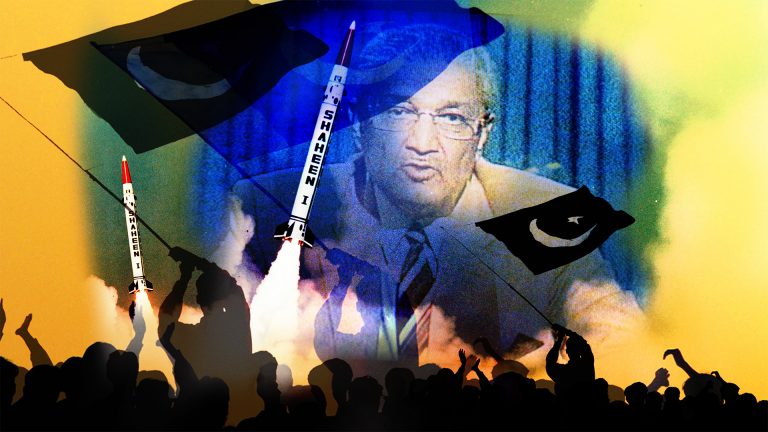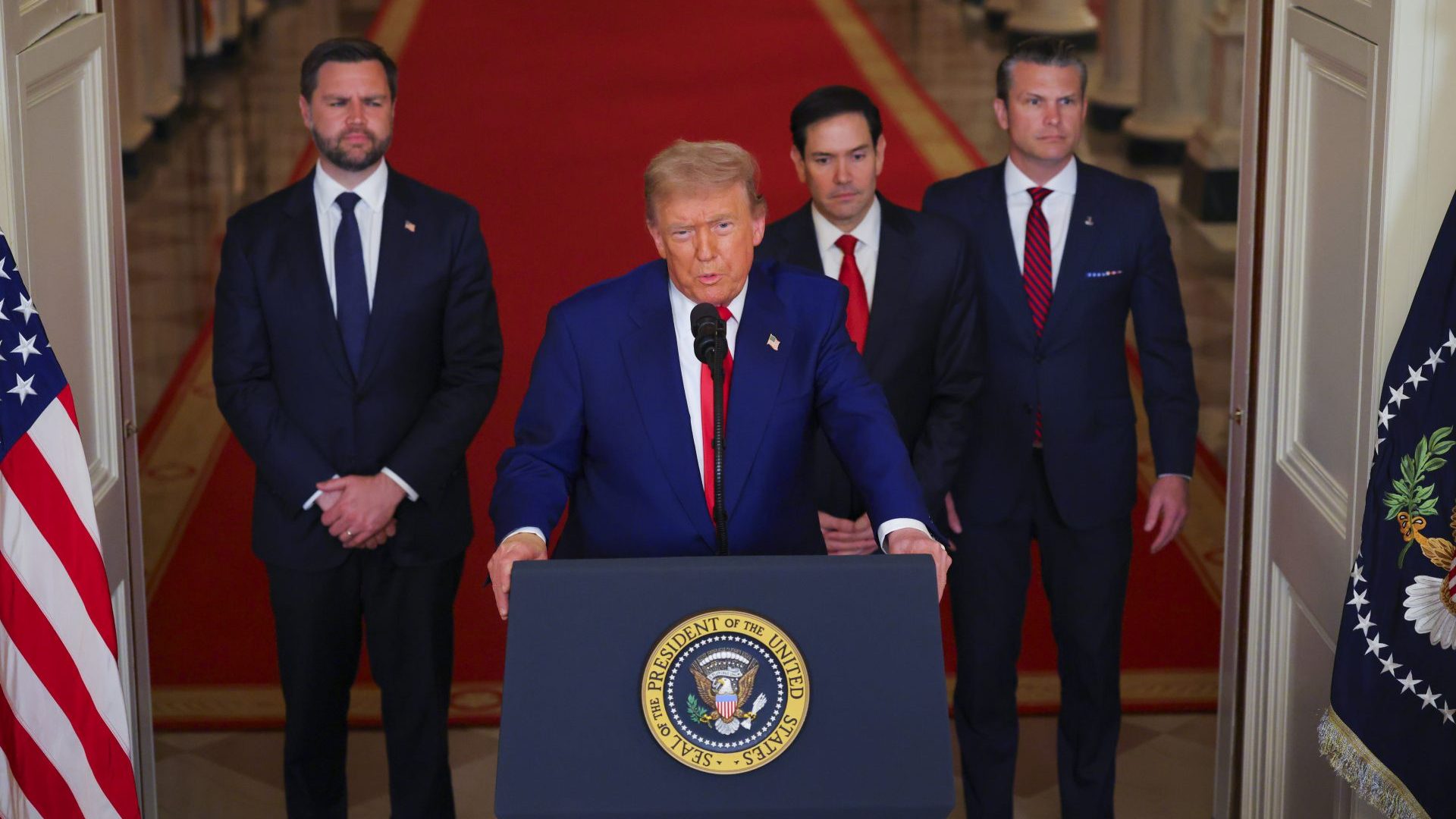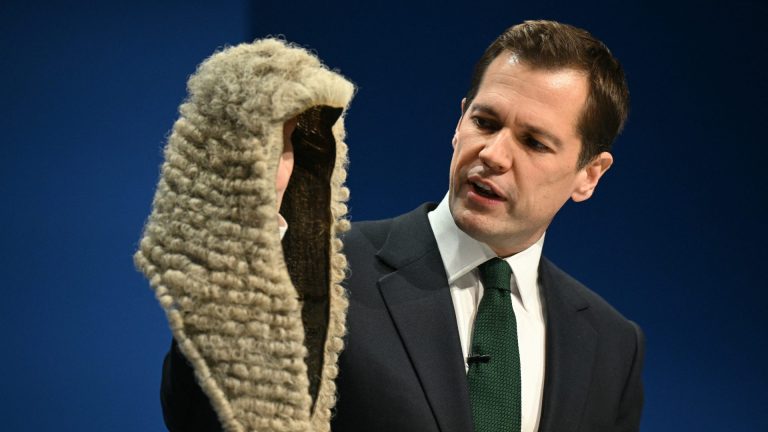A couple of days before the US bombs fell on Iran, I was trying to get out of Tel Aviv. Israeli air space was closed, so I evacuated by land, travelling south down through the Negev Desert, crossing the Jordanian border at Aqaba, before heading back north to Amman.
As I arrived in the Jordanian capital, air raid sirens rang out. Looking up, it was as if some inhuman-sized djinn of Arabic folklore was playing with molten copper in the dark night sky above us. The cause however was terrestrial, rather than celestial.
Jordanian air defences surrounding the city were intercepting Iranian missiles heading back west where I had just come from. It was a spectacular reminder that, while the focus has been on decisions being made in Tel Aviv, Tehran and Washington, this is a regional crisis, forcing leaders across the Middle East into complex calculations of political risk. Its impact will be felt long after the Israeli and US air force sorties over Iran achieve their military objectives.
Now Israeli PM Benjamin Netanyahu has started his war and succeeded in dragging in the US, they cannot stop until Iran’s nuclear weapons programme and its ability to acquire crucial fissile material is completely destroyed. If Netanyahu stops before that, he will only have succeeded in making Iran more determined to develop the bomb and more determined to seek revenge.
The challenge Israel will face is whether they can ever have the confidence that they have achieved this – even if American firepower succeeds in destroying the deeply buried chambers of Iran’s Fordow facility and they risk a major nuclear disaster by destroying the Bushehr reactor. Concerns about a nuclear Iran could persist, even if the weapons of mass destruction are as non-existent as those that took the US coalition into Iraq in 2003.
This is why both Netanyahu and Donald Trump have openly discussed regime change in Tehran. Ayatollah Ali Khamenei would rather see large numbers of Iranian citizens suffer than give up power and his removal would not guarantee the fall of the regime. One of the main candidates to succeed him is his son, Mojtaba Hosseini Khamenei, who is arguably more hardline.
The assassination of his father is unlikely to make him more sympathetic to Israel or the West. While the repressive regime is unpopular within Iran, patriotism tends to increase when a foreign power bombs your country. And air power, even with the level of air supremacy and sophistication of munitions Israel possesses, has never toppled a government.
The US and the UK inspired a coup in Iran in 1953 to topple the democratically elected leader, prime minister Mohammad Mosaddegh, after he tried to nationalise the oil industry. They replaced him with the puppet regime of the Shah, Mohammad Reza Pahlavi, who remained in power until the 1979 revolution. If Israel had assets in place to launch a similar coup, it likely would already have pursued it.
If somehow the Iranian regime did fall, either via Israeli and US actions or the actions of the Iranian people there would be a risk that the country could fall into chaos. Over the eastern border of Iran, I have seen firsthand the aftermath of the removal of a brutal autocratic regime, and the forces it released. A lesson many drew from post-Saddam Hussein Iraq is that order, even highly autocratic order, is often better than the sort of bloody chaos that can replace it.
Saddam killed hundreds of thousands of people beyond initiating the Iraq–Iran war, but removing him in 2003 caused even more civilian suffering and destabilised the wider region. The chaos of the aftermath of the US-led invasion arguably benefited Iran more than any other country, removing its nearest foe, spreading its influence west through new Shia proxies and according to Netanyahu, allowing it to focus efforts developing nuclear weapons.
There was no doubt that Iraq’s oil reserves were part of the coalition decision-making, but the invasion had ideological motivations, too. We had convinced ourselves that, as well as making the region safer by seizing Saddam’s weapons of mass destruction, we were there to save the people of Iraq from their own government and replace it with the single best way of organising all societies: liberal democracy.
Suggested Reading

The father of Iran’s nuclear programme
In effect, we attempted to force liberal democracy on people who had no cultural or historical links to its development. This unleashed long-suppressed and highly destructive old enmities and loyalties. However, the hubris that led us to attempt this back then, has now been replaced by Western self-doubt.
The demographic situation in Iran is different. In Iraq there was a Sunni elite suppressing a Shia majority. The collapse of Saddam’s Baathist regime (especially the disbanding of the Iraqi army) created a vacuum that occupying forces could never fill. Instead their presence was an accelerant for the spiralling sectarian violence rather than a restraint.
If the Iranian regime were to fall, the risk of popular reprisals against those involved in the harshest repression of the regime is likely. The international community would need to encourage any potential leaders to preserve as much of the existing state infrastructure as they could – minus the worst hardliners.
The international community would also, as they have done with the new Syrian leadership, be open to forms of government and leadership alien to their supposed values. Like Syria, a key characteristic of any new regime would be its fragility. The risks of increased failed spaces across the region has potentially dire consequences.
One such consequence is the rejuvenation of Islamic State of Iraq and the Levant (ISIL). ISIL once controlled large swathes of Iraq and Syria before being driven back. It has however continued to carry out sporadic attacks across the region, including Iran.
In 2024, ISIL claimed responsibility for two bombings targeting a memorial for assassinated Iranian general Qassem Soleimani, which killed more than 90 people. Last month, it claimed responsibility for an attack on the Syrian army, the first on government forces since the fall of Bashar al-Assad. Groups such as ISIL gravitate to vacuums.
While former officers in Saddam’s security apparatus helped in the formation of ISIL, figures fleeing regime collapse in Iran are likely to instead head towards Shia militias. In the aftermath of the 2007–2010 Stuxnet cyberattacks on Iranian nuclear facilities by Israel and the US, Iran has developed one of the largest cyber forces in the world.
Funding increased from around $76 million to $1 billion post-Stuxnet, and Iran now has the fourth biggest cyber army in the world. Iran found it far easier to develop cyber capabilities than nuclear weapons. In the dying moments of the regime, as well as an increase in physical ballistics, we may see the launch of weapons in cyberspace that will spread through global systems. In the aftermath of regime collapse the members of this force will be sought after by other nations and terror and criminal groups across the world.
Potentially the biggest consequence of regime collapse in Iran would also be the impact on the fragile Sunni–Shia balance across the Middle East. Sunni Saudi Arabia and Shia Iran have used the sectarian divide to further their ambitions and both act as fragile counter-balances to each other.
Many of the groups responsible for sectarian violence in the region and across the Muslim world since 1979 can be traced to Saudi and Iranian sources. There are thousands of organised sectarian militants throughout the Middle East capable of triggering a broader conflict, especially in Syria, Iraq, Lebanon, and Yemen. The toppling of the Iranian regime will destabilise this complex and delicate balance and the unintended consequences are as potentially as vast as they are violent and unpredictable.
For Israel, the end of the campaign could also bring the end of Netanyahu – or at least elections that force new coalitions. One day before launching the war on Iran, Netanyahu’s government had faced a confidence vote from the opposition. His political and legal challenges could still cloud his decision-making, and see him seeking perpetual conflict to avoid facing his own battles, in Iran, Gaza or both.
However, claiming “mission accomplished” in Iran may give him the confidence to go to the polls. Netanyahu is no Churchill, but still, despite the popularity at home of the war with Iran, he may receive the same treatment as Churchill did after the second world war. The British public, grateful for his wartime service, nonetheless elected a new leader to move the country on.
With the US joining Israel’s war, the risks to American citizens and assets, particularly in the Middle East within the range of Shia militias, but also globally from Iranian-linked terror cells on nearly every continent, increases. US involvement will likely be narrow in scope and tightly timebound.
Afterwards, Trump will want to walk away as quickly as possible without looking back at the wreckage. Presidents before him have wanted to do the same but have instead slipped deeper and deeper into wars that have lasted longer than their own terms in office.
Russia is not going to intervene militarily to defend its ally Iran. President Putin is not prepared to risk a direct confrontation with Israel and the United States for Iran’s sake. Even if Putin was, he lacks the capacity, as demonstrated by his lack of response to Assad’s fall in Syria.
The loss of influence in Tehran will be a bigger loss than the fall of Damascus. This will only be partially offset by a surge in oil prices, which will help Russia’s budget for the war in Ukraine, and the diversion of the world’s attention and American munitions from Ukraine.
Across the world, democracies and autocrats alike will note the inaction of US-backed multinational organisations to prevent this war, and the unilateral American decision to join the war which again highlights that the guiding principle of the new world order is “might is right”. This will have an impact across every dormant flashpoint globally, from the South China Sea to South Sudan.
Iran has been the main cause of instability within the Middle East since the birth of the Islamic Republic in 1979 and this threat has extended beyond the region. Its fall could create even more instability within and beyond the region. Some of the consequences we can already foresee, some of the worst we may not yet understand.











